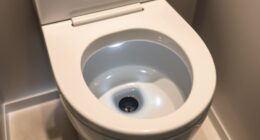We’ve all dealt with the annoyance of a feeble flush. But worry no more! We’re here to uncover the mysteries of what makes a toilet flush with vigor.
From the design of the bowl and trapway to the force of water pressure and velocity, there’s a lot at play. The flapper and flush valve, together with the rim and jet holes, contribute to the siphon action that ensures a thorough evacuation.
And let’s not forget about gravity-assist flushing and dual-flush technology.
Get ready to master the art of a truly powerful flush!
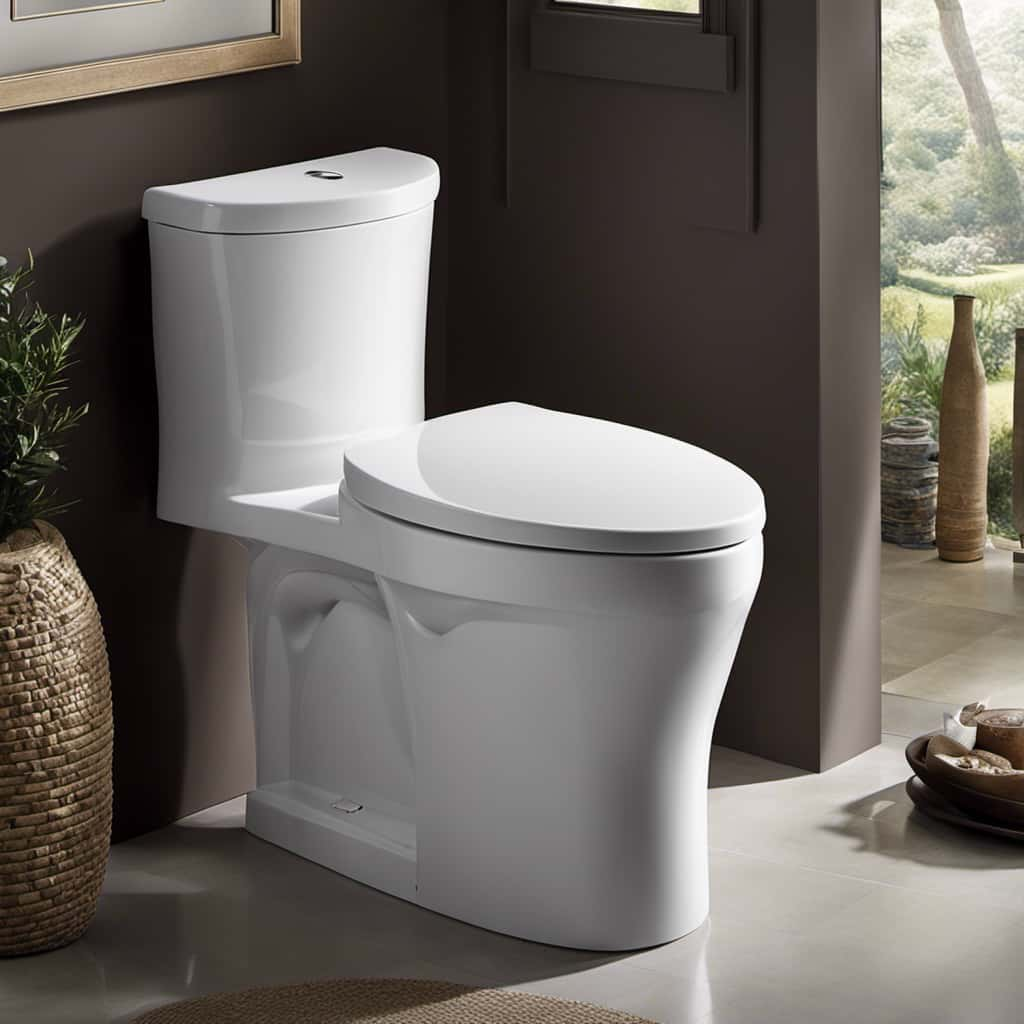
Key Takeaways
- The shape and smoothness of the bowl surface prevent waste from sticking and allow for thorough flush.
- Adequate water pressure ensures forceful expulsion of water and promotes efficient flushing.
- Water velocity plays a crucial role in the power of the toilet flush, with higher velocity increasing flushing power.
- Well-functioning flapper and flush valve ensure a powerful flush, improving bowl cleanliness and reducing the need for multiple flushes.
Bowl and Trapway Design
How does the bowl and trapway design contribute to the powerful flush of a toilet?
The bowl cleanliness and trapway size play crucial roles in ensuring an efficient and robust flush. The shape and smoothness of the bowl surface are essential for preventing waste from sticking and promoting cleanliness. A well-designed bowl prevents clogs and allows for a more thorough flush.
Additionally, the trapway, which connects the bowl to the drainpipe, must have an adequate size to allow for the quick and effortless passage of waste. A wider and smoother trapway reduces the risk of clogs and allows for a more forceful flush.
These design elements work together to optimize the flow of water and waste, ultimately resulting in a powerful flush that effectively removes waste from the bowl.
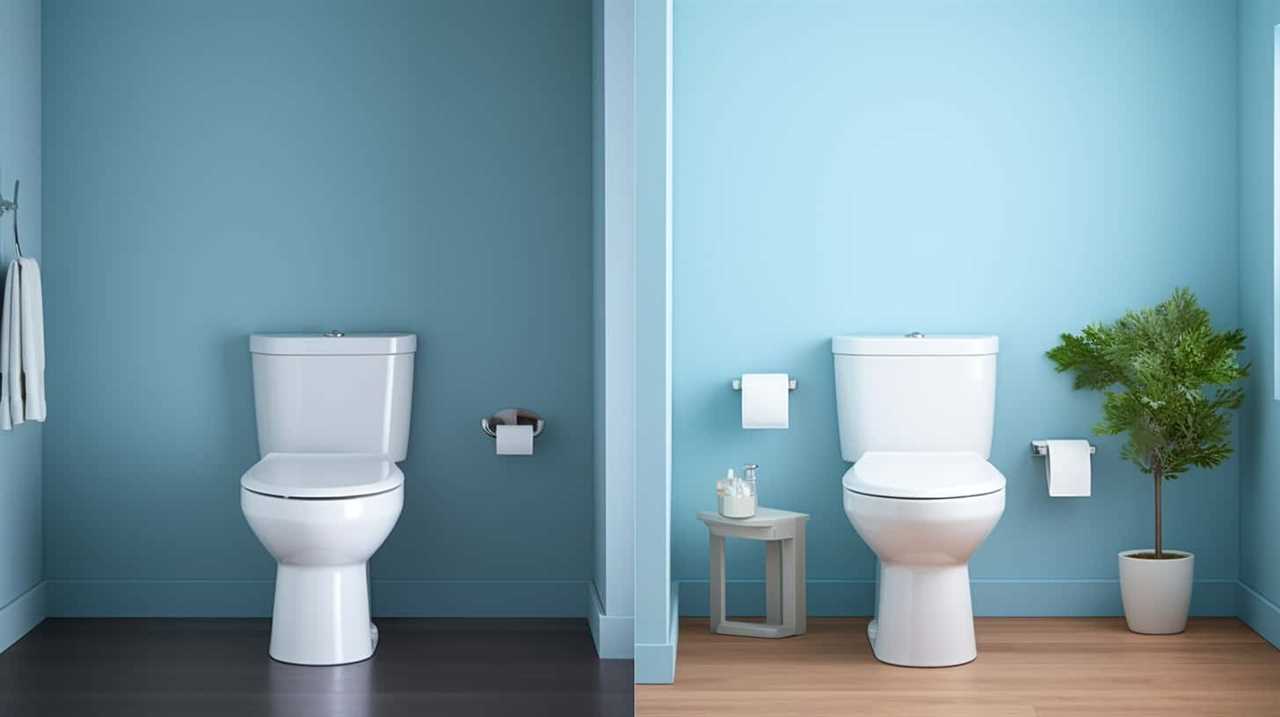
Water Pressure
The water pressure within a toilet is another crucial factor that contributes to its powerful flush. Adequate water pressure ensures that the water is forcefully expelled from the tank into the bowl, effectively removing waste.
Here are two reasons why water pressure is important:
- Efficient flushing: Sufficient water pressure allows for a rapid and forceful expulsion of water, ensuring a complete flush and minimizing the need for multiple flushes. This promotes water conservation by reducing the amount of water used per flush.
- Plumbing maintenance: Insufficient water pressure can lead to clogs and blockages in the toilet’s trapway and plumbing system. By maintaining optimal water pressure, you can prevent these issues and avoid costly repairs.
Now that we understand the significance of water pressure, let’s delve into the next important aspect of toilet flushing – water velocity.
Water Velocity
Water velocity plays a crucial role in the power of a toilet flush.
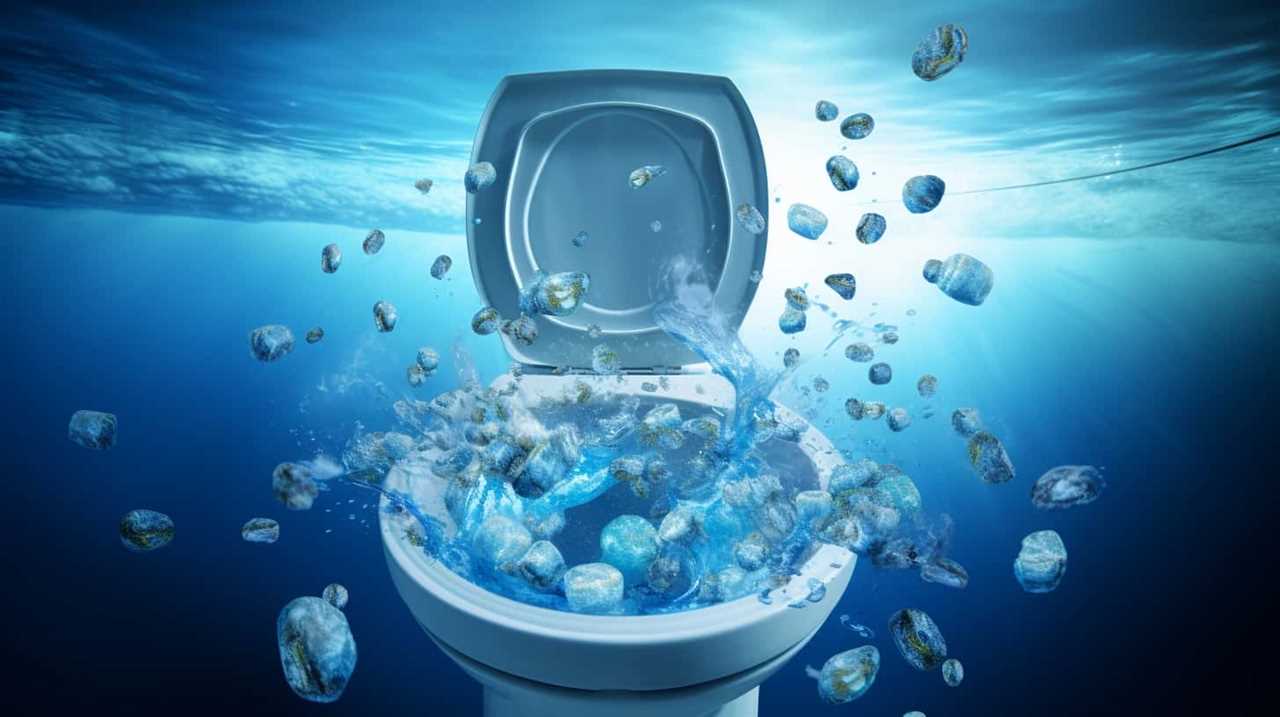
To understand this, let’s discuss the jet propulsion mechanism and how it optimizes the flushing force.
Jet Propulsion Mechanism
To achieve a powerful flush, we rely on the jet propulsion mechanism, which is driven by high water velocity. The efficiency of this mechanism plays a crucial role in the effectiveness of toilet flushing. Innovations in toilet design have focused on optimizing the jet propulsion efficiency to ensure a forceful and efficient flush.
Here are two key aspects related to the jet propulsion mechanism:
- Water Jet Formation: The shape and design of the toilet bowl, as well as the position and size of the rim holes, contribute to the formation of a strong and focused water jet. This ensures that the water is directed with maximum force towards the waste, aiding in its removal.
- Water Velocity: The speed at which water is propelled into the bowl significantly impacts the flushing power. Higher water velocity increases the force exerted on the waste, dislodging it and carrying it away more effectively.
With a clear understanding of the jet propulsion mechanism, we can now dive into the subsequent section about flushing force optimization.

Flushing Force Optimization
Now that we’ve established the importance of the jet propulsion mechanism, let’s delve into how we optimize flushing force through water velocity.
The flushing force of a toilet is greatly influenced by the speed at which water flows into the toilet bowl. To maximize this force, two key factors come into play: toilet bowl shape and flush handle mechanism.
Firstly, the shape of the toilet bowl plays a crucial role in optimizing water velocity. A well-designed bowl with a smooth surface and contoured shape allows water to flow in a controlled manner, creating a strong flushing force. The shape ensures that water is directed towards the drain, preventing any backflow or splashing.
Secondly, the flush handle mechanism is another important aspect of flushing force optimization. A well-designed mechanism ensures that the water is released quickly and forcefully into the bowl, maximizing the flushing action. The handle should provide enough leverage to initiate a rapid and powerful flush, allowing for effective waste removal.
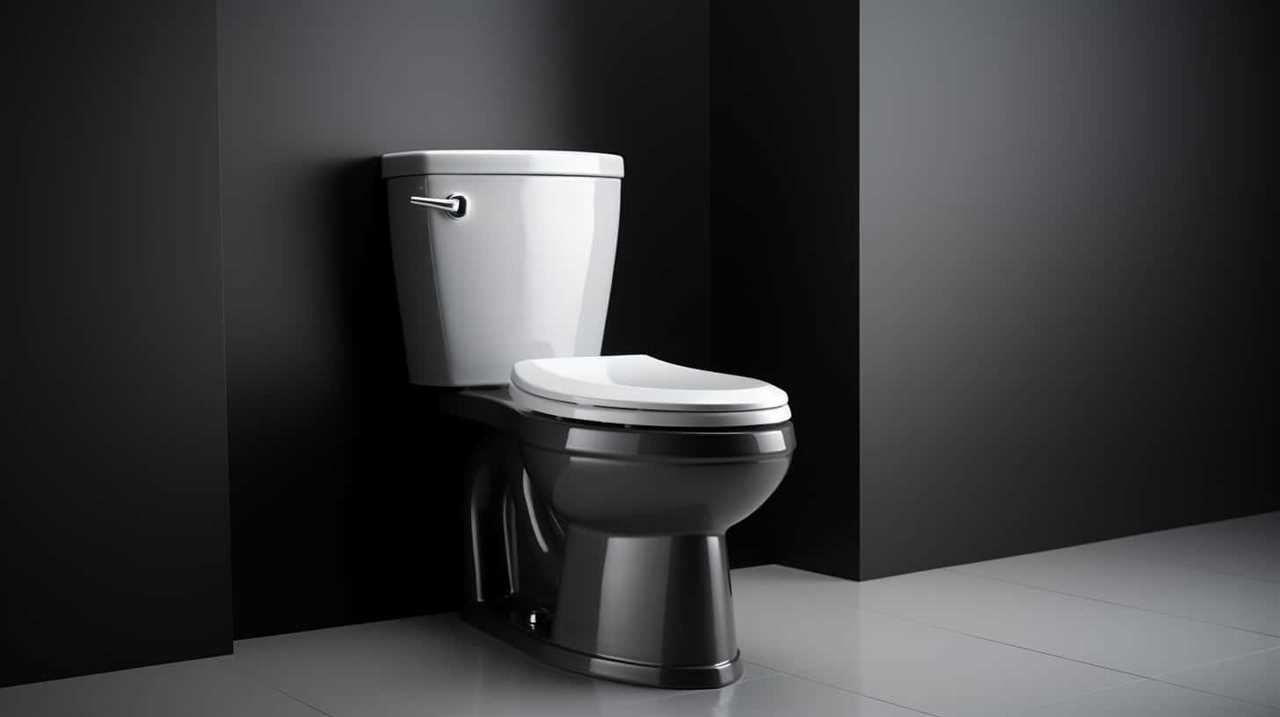
Flapper and Flush Valve
With the flapper and flush valve working together, we can ensure a powerful flush for our toilets. The flapper is a rubber seal that opens and closes the flush valve, which is responsible for releasing water into the toilet bowl.
Here are two key benefits of a well-functioning flapper and flush valve:
- Improved bowl cleanliness: A strong flush ensures that waste is properly removed from the bowl, preventing the buildup of bacteria and odors.
- Water conservation: A powerful flush reduces the need for multiple flushes, saving water with each use and promoting sustainability.
By maintaining the flapper and flush valve in good condition, we can achieve optimal performance and enjoy a clean and efficient toilet.
Now, let’s move on to the next section about rim holes and jet holes, which play a crucial role in the flushing process.
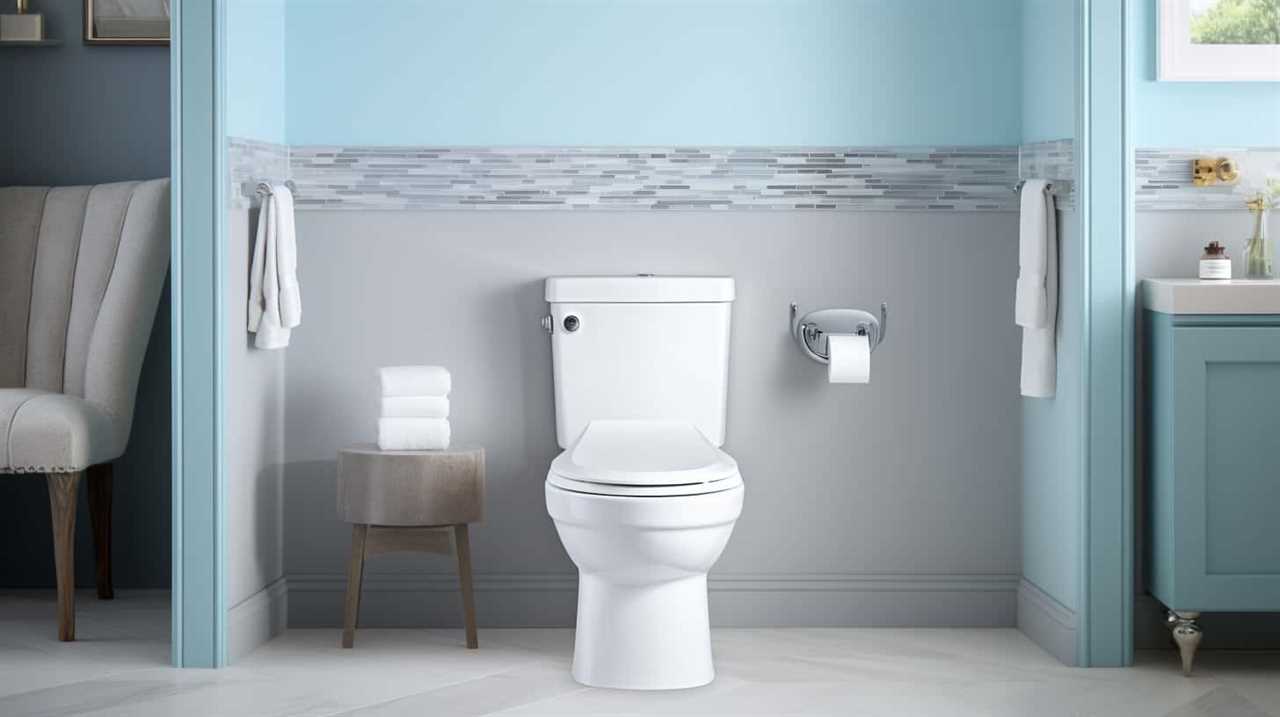
Rim Holes and Jet Holes
Continuing from our previous discussion on the flapper and flush valve, let’s now delve into the important role of rim holes and jet holes in achieving a powerful flush. Rim holes and jet holes are strategically placed openings in the toilet bowl that play a vital role in ensuring efficient flushing and proper toilet hygiene. These holes are responsible for directing water flow and creating a swirling action, which helps to clean the bowl thoroughly and remove waste effectively.
To give you a better understanding, let’s take a look at the table below, which illustrates the placement and function of rim holes and jet holes:
| Hole Location | Function |
|---|---|
| Rim Holes | Deliver water to the |
| upper rim of the bowl, | |
| aiding in rim cleaning. | |
| —————— | ———————— |
| Jet Holes | Propel water into the |
| bowl, generating a | |
| powerful flushing force. |
Ensuring that these holes are clean and free from any blockages is essential for maintaining optimal toilet hygiene and achieving a powerful flush. Now that we understand the importance of rim holes and jet holes, let’s move on to our next topic: the fascinating siphon action and its contribution to a powerful flush.
Siphon Action
To begin understanding the siphon action behind a powerful flush, we’ll explore its mechanics and functionality. The siphon action in a toilet is responsible for creating the force that moves waste and water out of the bowl. Here are some key points to consider:

- Siphon Maintenance:
- Regular cleaning of the siphon jet and trapway is essential to ensure optimal performance.
- Inspecting and repairing any leaks or cracks in the siphon tube is crucial for maintaining its efficiency.
- Siphon Troubleshooting:
- If the toilet fails to flush properly, check for clogs or blockages in the siphon jet or trapway.
- Adjusting the water level in the tank can also help improve the siphon action.
Understanding the maintenance and troubleshooting techniques for the siphon action is vital for keeping your toilet functioning at its best.
Now, let’s delve into the next section, where we’ll explore the concept of gravity-assist flushing.
Gravity-Assist Flushing
Gravity-assist flushing relies on the force of gravity to create a powerful flush. Unlike siphon action toilets, which rely on a vacuum effect, gravity-assist toilets use the weight and pressure of water to generate flushing power. These toilets have a larger trapway and a larger water surface area, allowing a greater volume of water to flow through the bowl.
When the flush valve is opened, the water rapidly exits the tank and enters the bowl under the force of gravity. This creates a strong, efficient flush that effectively removes waste. Gravity-assist toilets are often preferred in commercial settings due to their ability to handle high usage and reduce the risk of clogs.
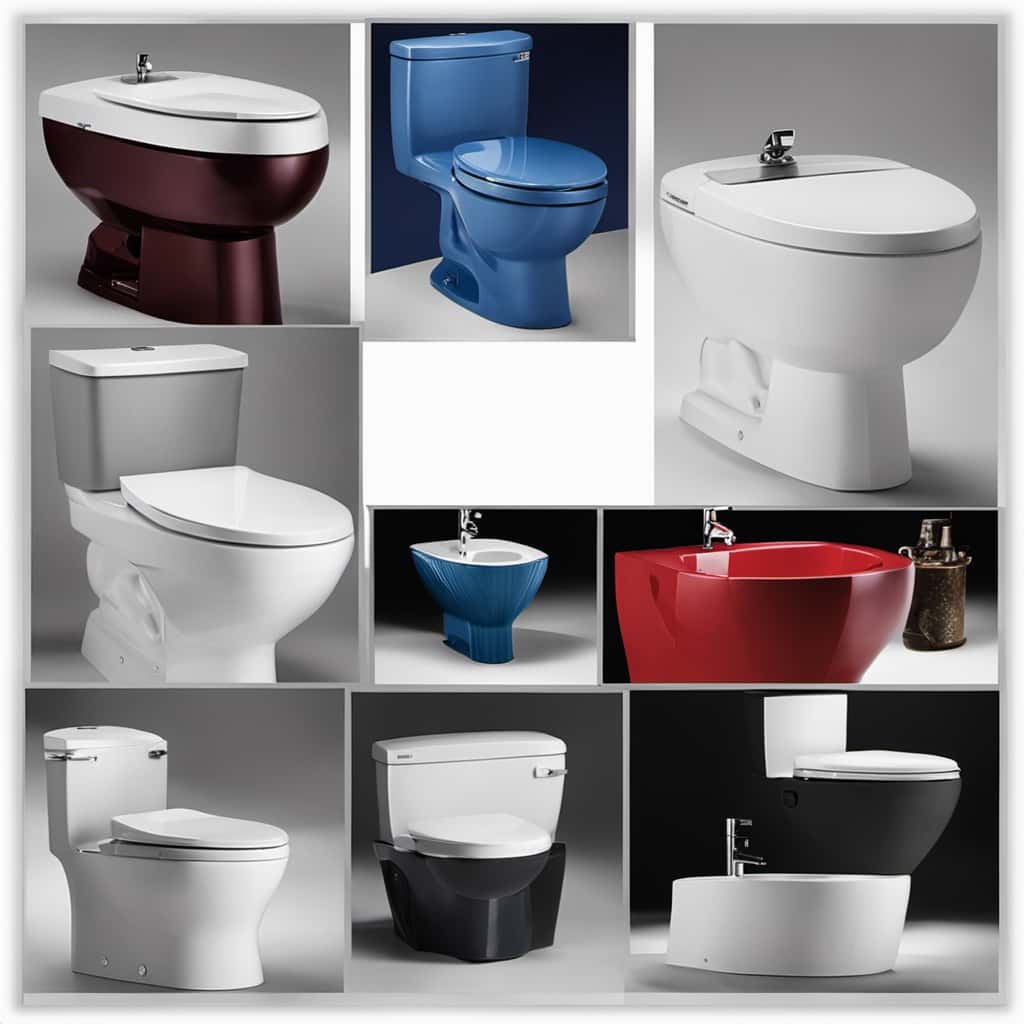
In contrast, pressure-assist toilets use compressed air to enhance the flushing power, but they can be noisier and more expensive to install.
Dual-Flush Technology
Now let’s explore the efficiency of dual-flush technology in toilets. Dual-flush toilets offer significant benefits in terms of water conservation and cost savings. Here are some reasons why dual-flush technology is worth considering:
- Water savings: Dual-flush toilets provide two flushing options – a full flush for solid waste and a reduced flush for liquid waste. This allows users to choose the appropriate amount of water for each flush, resulting in significant water savings over time.
- Cost savings: With reduced water usage, dual-flush toilets can help lower water bills, making them a cost-effective choice in the long run.
Maintenance tips for dual-flush toilets:
- Regular cleaning: Keep the toilet bowl and flush buttons clean to ensure proper functioning and hygiene.
- Check for leaks: Periodically inspect the toilet for any leaks and promptly fix them to prevent wastage of water.
Flushing Performance Testing
When it comes to flushing performance testing, there are two key points to consider: flushing technology advancements and the balance between water efficiency and performance.
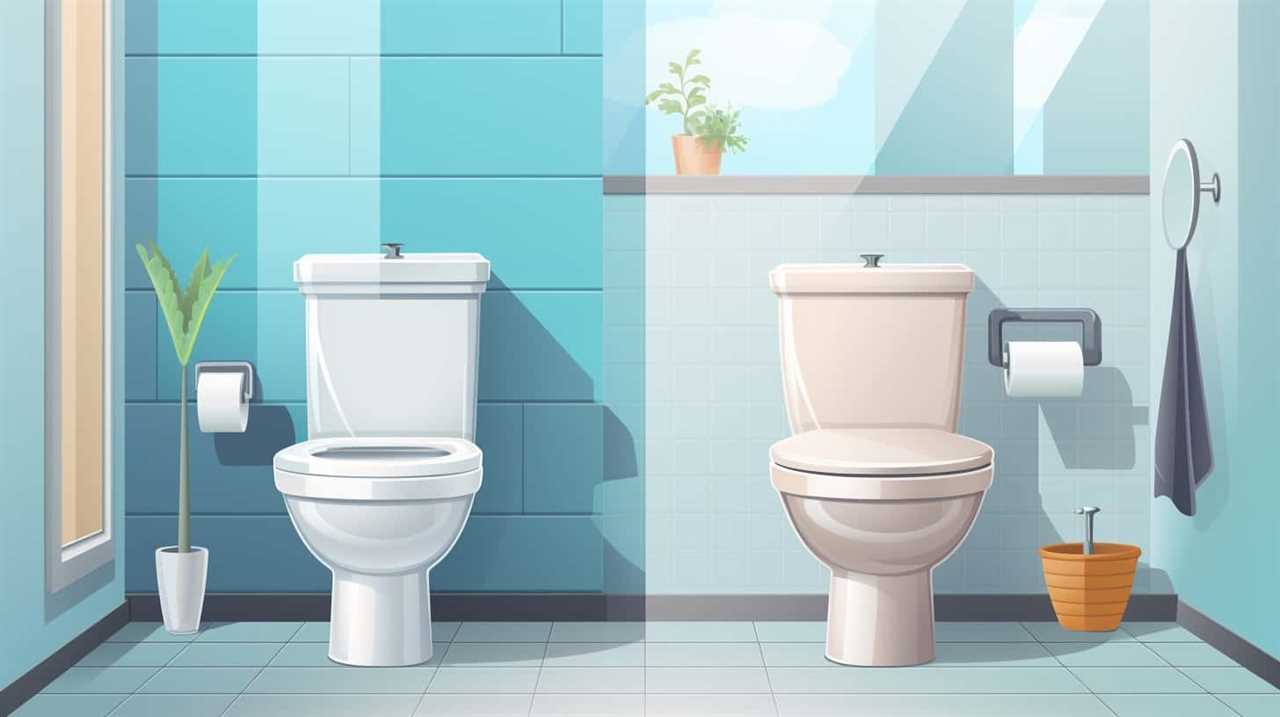
Flushing technology has come a long way, with innovations such as pressure-assisted flushing and rimless bowl designs.
However, it’s important to strike the right balance between using less water and still achieving a powerful flush to ensure effective waste removal.
Flushing Technology Advancements
In our quest for a powerful flush, we’ve made significant advancements in flushing technology through rigorous testing of flushing performance. These advancements have led to improvements in both toilet bowl materials and self-cleaning technology. Here are two aspects of flushing technology that have greatly enhanced the overall performance of toilets:
- Toilet Bowl Materials:
- Porcelain and ceramic materials are commonly used for toilet bowls due to their durability, smoothness, and resistance to stains and odors.
- Recent advancements have introduced new materials, such as glazed ceramic and vitreous china, which provide even better flushing performance and easier maintenance.
- Self-Cleaning Technology:
- Innovative self-cleaning technologies, like rimless designs and hydrophobic coatings, prevent the buildup of waste and bacteria, ensuring a more hygienic toilet bowl.
- These advancements not only improve flushing performance but also reduce the need for manual cleaning, saving time and effort for users.
Through these developments, we continue to push the boundaries of flushing technology, providing toilets that deliver powerful and efficient flushes while maintaining cleanliness and hygiene.
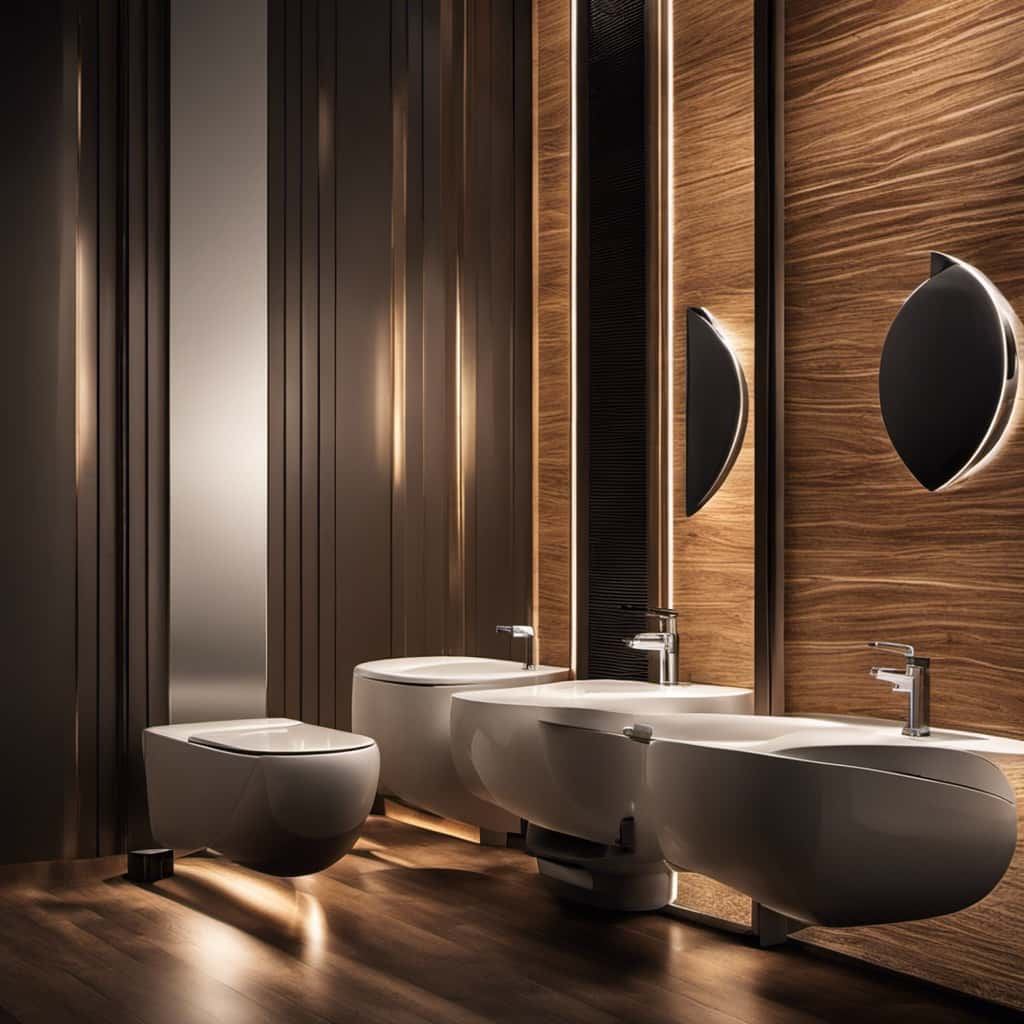
Water Efficiency Vs Performance
Toilets with powerful flushes are constantly tested for their flushing performance, striking a balance between water efficiency and effectiveness. When it comes to toilet design, the goal is to minimize water consumption while still ensuring that waste is efficiently and completely flushed away.
Flushing performance testing is conducted to evaluate how well a toilet can remove waste using the least amount of water possible. This testing involves measuring parameters such as maximum flush volume, flush duration, and water pressure.
Manufacturers use these performance test results to optimize toilet designs, making them more water-efficient without compromising on flushing power. By continuously improving flushing technology and finding innovative ways to reduce water consumption, toilets are becoming more environmentally friendly while still delivering powerful flushes.
Conclusion
And thus, we’ve delved into the intricate world of toilet flushing mechanisms. The power of a flush lies in the perfect harmony of bowl and trapway design, water pressure, velocity, flapper and flush valve efficiency, rim holes and jet holes precision, siphon action, gravity-assist flushing, and the marvel of dual-flush technology.

Through rigorous flushing performance testing, we’ve unraveled the secrets behind a powerful flush. This leaves us in awe of the engineering marvel that resides within our porcelain thrones.







